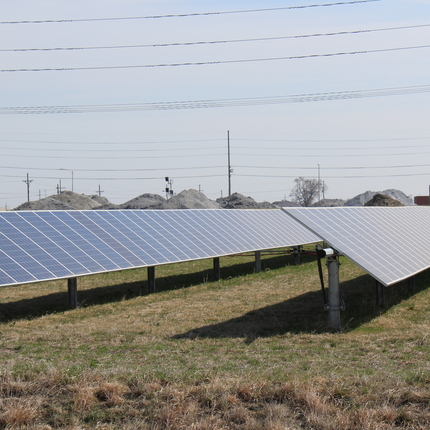By Lucas Nelsen, former staff member
As renewable energy development continues to surge across the nation, many Midwestern states are building more local renewable energy to meet consumers' needs. Nebraska has significant renewable energy resources with the third best wind energy potential in the country, and ranks 13th in solar energy potential. Despite this, Nebraska is still heavily reliant on coal from out of state and lags behind neighbors in developing renewable energy resources.
If we were to reach our full potential, wind energy and large-scale solar energy could provide over 448 times our energy needs in the state. But challenges stand in the way for development of renewables in Nebraska. A lack of transmission and access to financing or incentives have hindered the ability of public power and others to develop renewables in our state. While steps have been made to address some of these roadblocks, others still persist for wind and solar.
To pursue a renewable future for our state, we need to identify means that will make that future possible. This requires that we make it easier for more consumers and communities to access solar investment and development, and ultimately keep the money they spend on power in their local area. The Solar Foundation identified that as of 2015, the solar industry had already supported 776 jobs in Nebraska, including installation, manufacturing, distribution, and development of projects and parts. To fully capture the economic benefits that renewable energy development can provide, policymakers should focus on efforts that will make financing, incentives and interconnection for renewables readily available in Nebraska.
Community solar gardens and projects provide an innovative method of providing consumers with a chance to buy into solar. These programs allow community members who cannot install solar on their property to still invest in and access local solar power. An example can be found in a Central City, Neb., solar garden, which at around 200 kW can generate enough energy to power more than 20 homes. A locally developed project like this can reduce power costs for a community. It also creates new avenues for economic development as residents gain more experience and interest in solar energy. More community solar projects are being proposed or considered in communities across the state, including Kearney, Venango and Scottsbluff.
To fully embrace this opportunity, we must allow consumers and communities to access financing to help them invest in these projects. We must also let them craft policies, such as net-metering, that make investment in solar and other renewables beneficial for power users. Increasing renewable development through these measures will help communities use their local resources to generate power and keep our energy dollars in Nebraska, where they benefit our small towns and local communities.





